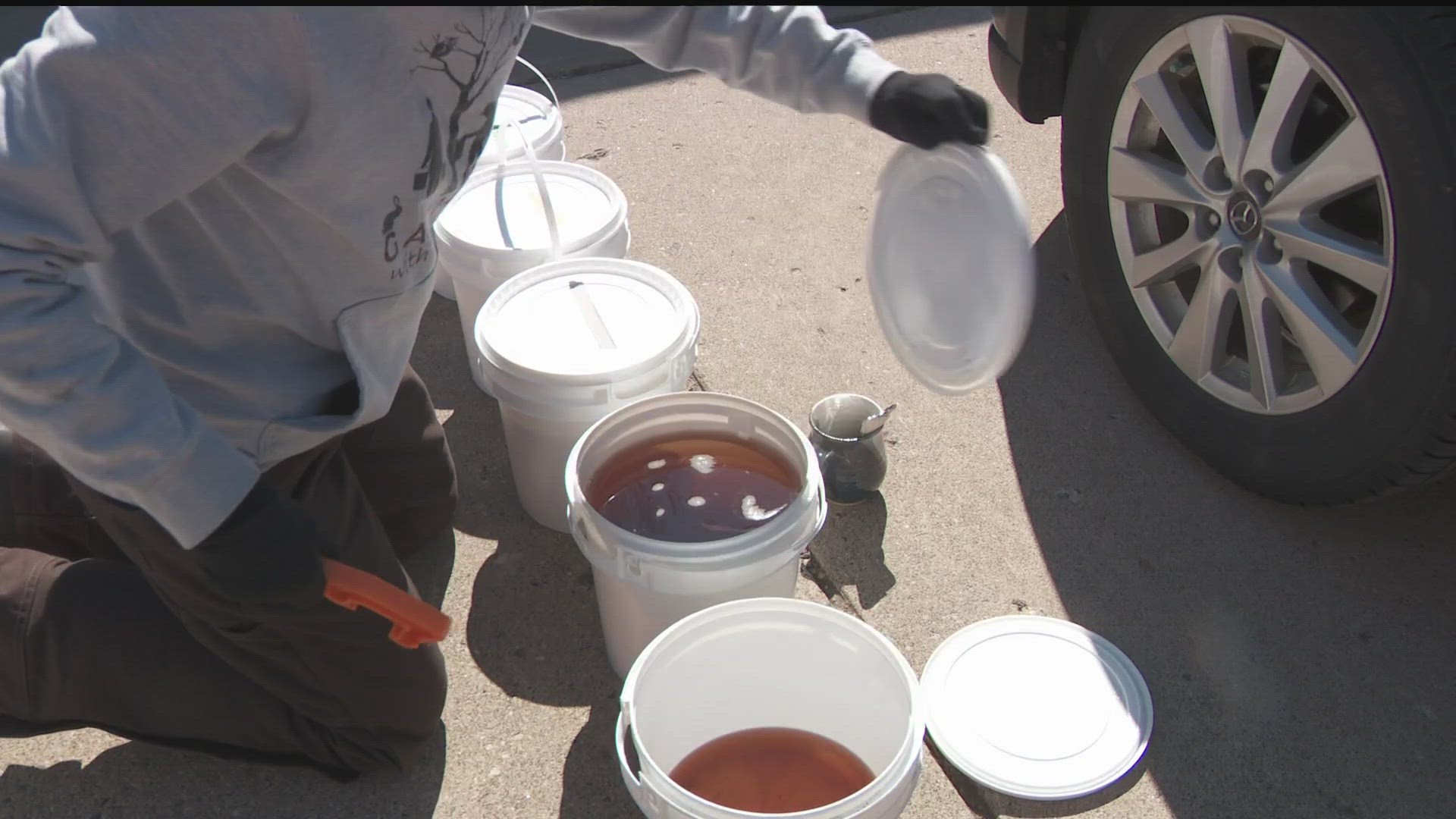ROSEVILLE, Minn. — Songs of spring differ by region, but in Amy Perkins' neighborhood, the music of tree sap hitting metal buckets fills the air.
"My first year I collected 115 gallons of sap," Perkins recalled. She has tapped her five maple trees, but the operation has grown since then. She's gotten dozens of other neighbors involved. Some let her tap their trees. Some actively participate by collecting sap and bringing it over to Perkins.
She said she was initially very surprised at how simple the process seemed. Drilling a hole into the tree didn't seem hard.
"Instead of going tin tin tin tin, it kinda goes thunk thunk, and I can feel it seat in the tree," Perkins said, as she re-installed a tap back into a neighbor's tree that already had a hole drilled into it.
Every season she said, ends with a big, final, neighborhood boil. This season's last boil took place this past Saturday. However, the boiling process happens every week, since sap needs to be processed within a week of being collected. Everyone brings their sap to her, and they boil it down, which is an hours-long, days-long process.
"When someone brings sap, I record what they brought and what we put into the evaporator and we divide it out in the end," Perkins said. "And some people just let me tap their trees, and I do all the work and I give them a thank you bottle."
This winter's bounty was good and golden. They were at different stages of boiling, some syrupy, some still watery, needing more hours on the evaporator. Perkins had them stored in white plastic buckets. She said the season, however, underdelivered.
"On paper this weather this year has been so good, whole season, perfect almost every day," she said. "A lot of these days were really nice-- but you need the temps to be upper 30's to mid 40's, but a lot of these days it doesn't get to mid 30's until the late afternoon. Then you only have a couple of hours before temps drop again and that's my impression of what's going on here."
According to DNR's maple syrup expert Ryan Brubaker, the lower, freezing temps overnight causes 'negative pressure' or 'sucking pressure' from the trees, allowing the trees to bring in water through its roots. Then the warm temperatures following it, creates 'positive pressure,' which drives out the sap through a tapped hole.
Brubaker explained that the long thaw has been good for the season overall, with the temperature differential being so crucial. However, he said it's been years since the syrup season has been consistent.
"We like a long slow thaw for maple syrup production," Brubaker explained. "You want those temps below freezing at night, above during the day. We want that to last--usually in Minnesota, that goes about four to six weeks in ideal conditions. It's been a crapshoot in the last ten years, really early starts, really late starts, really short seasons and long seasons, it hasn't been as consistent."
Plus, Brubaker said no two trees are the same, creating different conditions depending on the neighborhood, sometimes, even the block.
"Slight factors like what kind of soil you have there, what type of maple species you have on your site, and the overall tree health of your sugarbush can affect sap production," he said.
With the timeframe to tap so short at just four to six weeks a year, the attitude to finding the goodness in syrup may not be in the sugar, but in the sweetness of gathering, and enjoying spring.
"It's a fun time of year to get out in the woods, things are changing, it's a transitional period, trees are waking up snow is melting," Brubaker said with a big smile on his face. "Friends come over and you watch water boil for hours and have a good time and play some cribbage, you're making something delicious."
"It's kind of a magical thing," Perkins added. "It's really amazing when you just think about how this gift from the trees is here."

